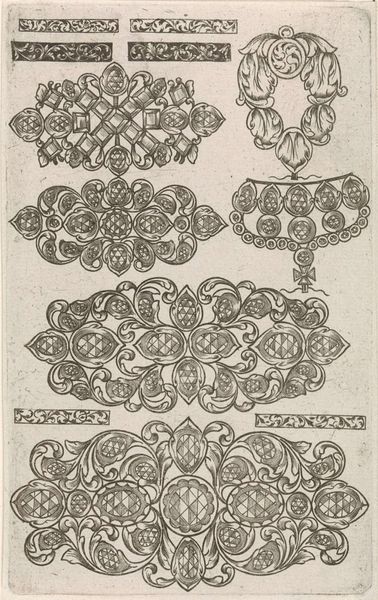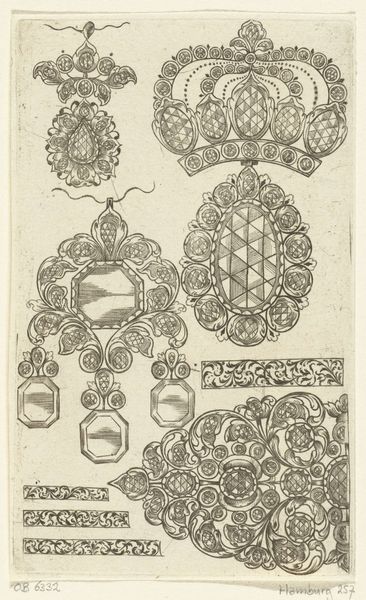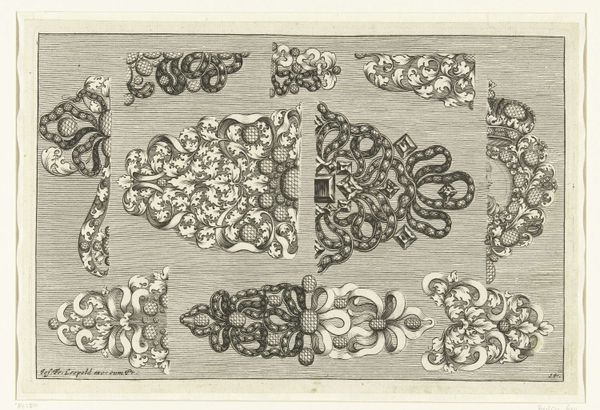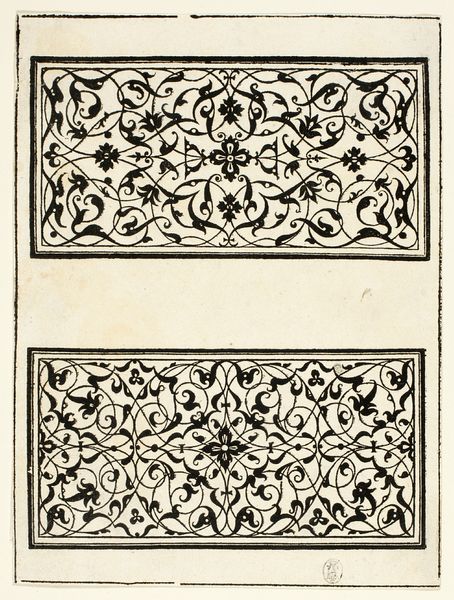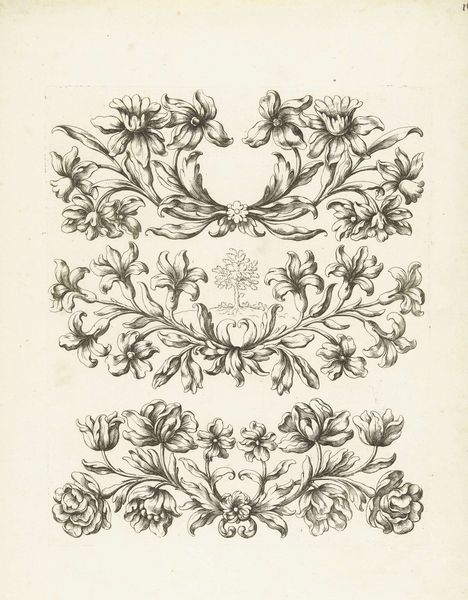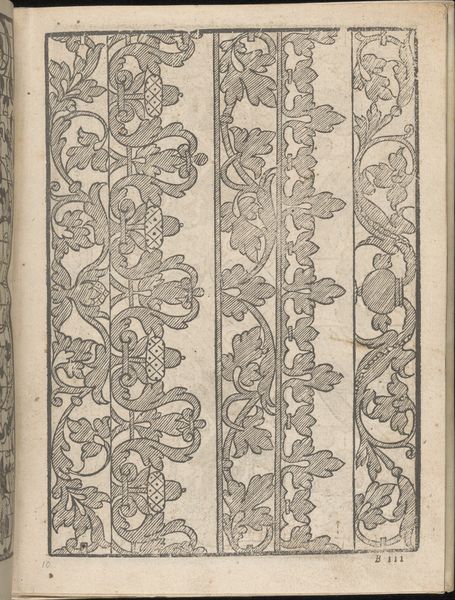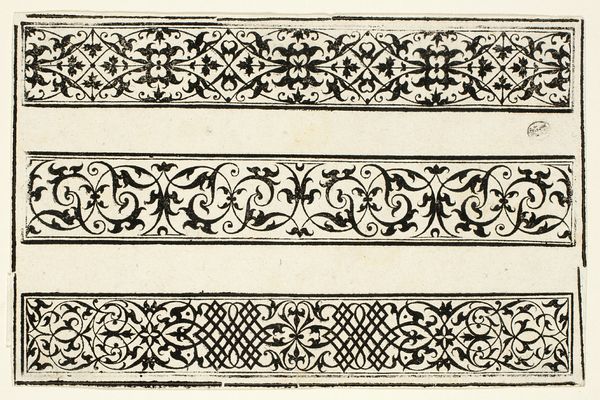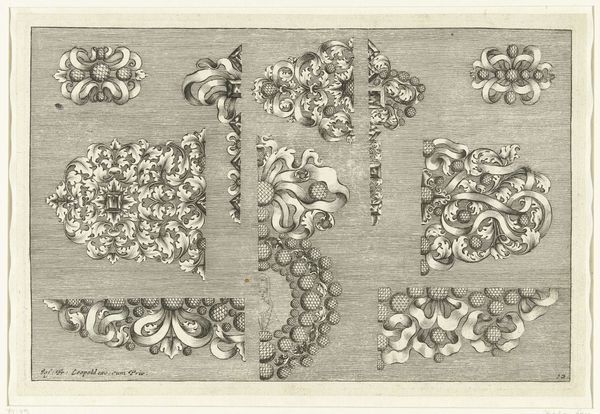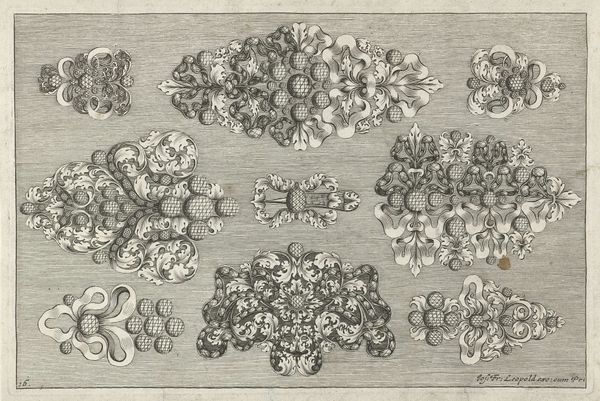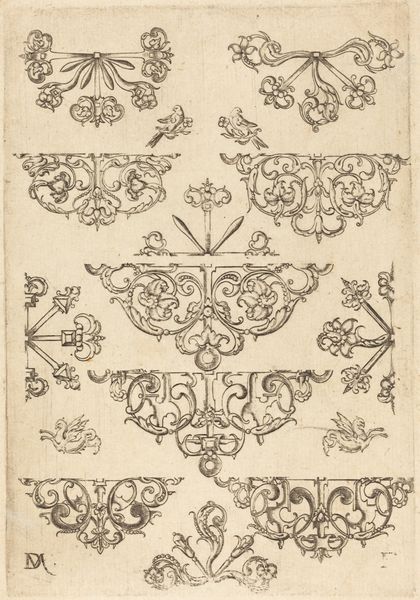
drawing, print, engraving
#
drawing
#
baroque
# print
#
line
#
pen work
#
pattern repetition
#
decorative-art
#
layered pattern
#
engraving
Dimensions: height 137 mm, width 84 mm
Copyright: Rijks Museum: Open Domain
Curator: Welcome to the Rijksmuseum. We’re standing before “Twaalf Ornamenten,” or “Twelve Ornaments,” by Daniel de Lafeuille, dating from around the 17th century. It’s an engraving, part of the decorative arts tradition. Editor: It’s quite pretty, a sheet filled with delicate, jewelry-like patterns! Reminds me of tiny kaleidoscopes captured in ink, with just a hint of floral whispers about them. Curator: Absolutely. Lafeuille's work circulated as design templates for artisans—goldsmiths, jewelers, maybe even embroiderers. It's fascinating to consider how such prints facilitated the dissemination of baroque aesthetics across various crafts. Editor: Design blueprints! That adds a whole other layer to it. I was just thinking about the craftsmanship itself; envision someone painstakingly etching all those swirling details... You get the sense of slow labor when looking closely. I'm also noticing all that precise pen work; you can sense its pulse within the engraving! Curator: Precisely. The prints highlight the intersection of artistic design and manual skill inherent in artisanal production of that period. Notice how pattern repetition emphasizes mass production. Editor: Now that you mention production, my mind's leaping! Were these ornaments exclusive designs for the elite or more widespread, adorning middle-class goods too? Were common folk walking around sporting elements lifted directly from these designs? Curator: A complicated question. These designs probably circulated at different social levels, influencing luxury goods alongside more modest interpretations of the baroque aesthetic. The engraving as a medium enabled broader consumption, a far cry from unique commissions. Editor: It makes me think about accessibility and democratization of style, of-sorts. Even today, seeing those clean lines translated across different materials--glass or textiles, say--it would give that artisan edge to any mass produced product. Curator: Yes! The layering gives each pattern richness and depth; considering labor, it adds significantly to both monetary and perceived value of goods sporting even parts of these elements. Editor: Well, that definitely adds more to appreciate. When you really dive into thinking how images such as these actually operated, that little black-and-white print gains some serious shimmer. It holds such potential!
Comments
No comments
Be the first to comment and join the conversation on the ultimate creative platform.

